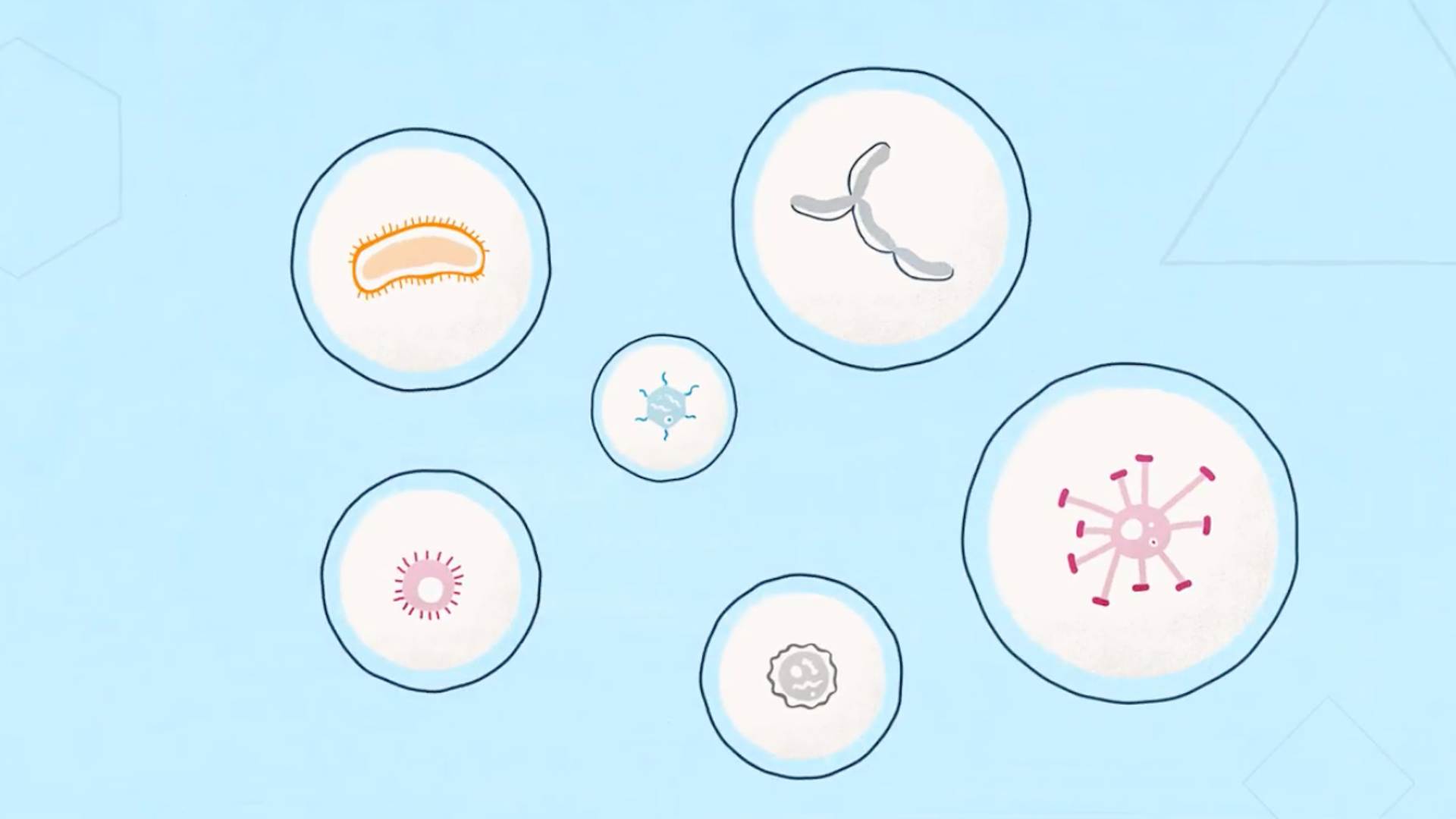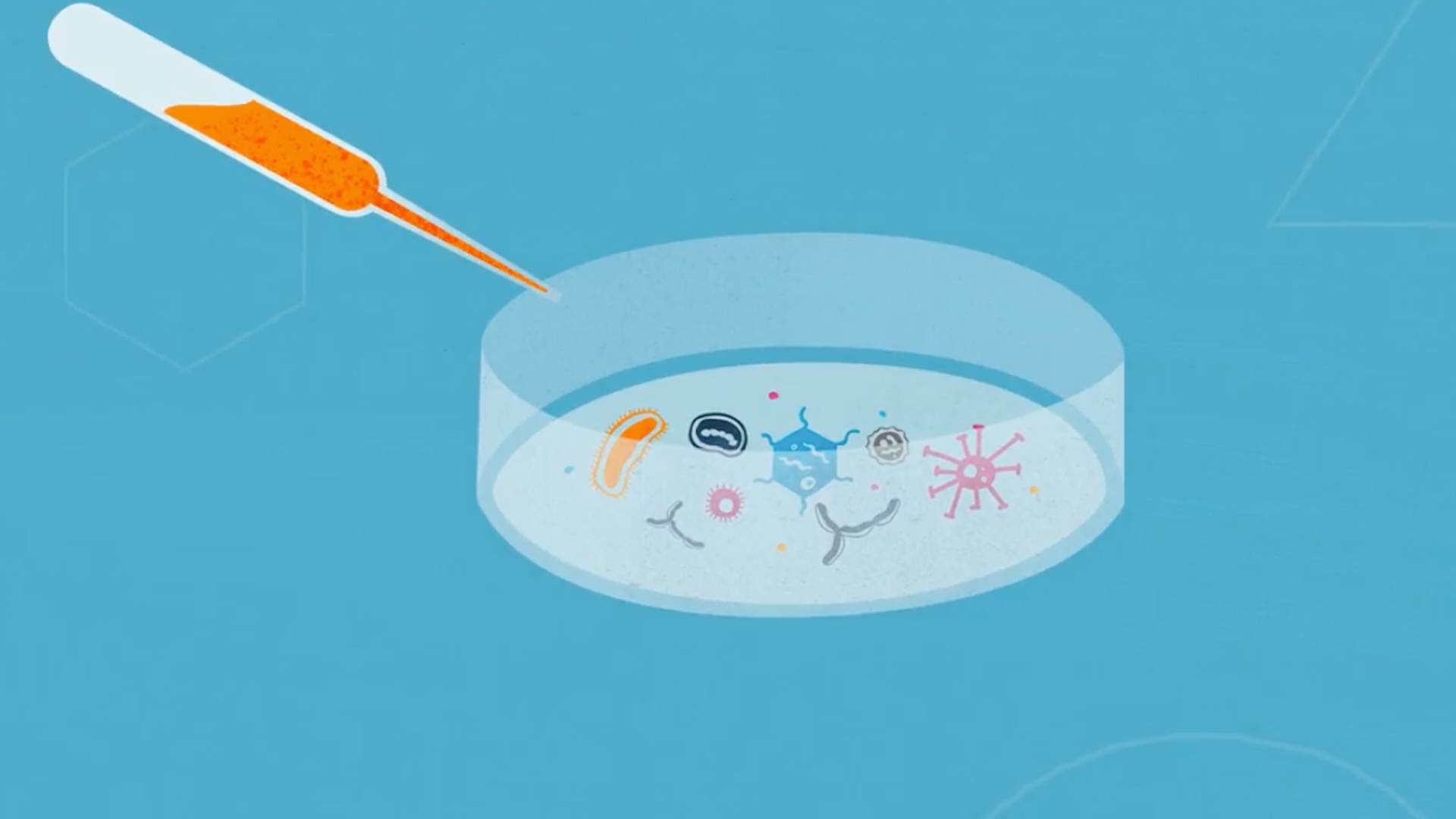| | | | | | | Presented By PhRMA | | | | Axios Science | | By Alison Snyder · Dec 15, 2022 | | Thanks for reading Axios Science. This week's newsletter is 1,557 words, about a 6-minute read. - Send your feedback and ideas to me at alison@axios.com.
- We're off the next few weeks for the holidays and will be back in your inbox in January. Thank you for all your thoughtful notes and feedback this year. I wish you a restful end to 2022.
🇨🇭Axios will be at the 2023 World Economic Forum in Davos, Switzerland. Want to attend one of our events? Request an invite here. | | | | | | 1 big thing: The long road to a fusion-powered future |  | | | Illustration: Natalie Peeples/Axios | | | | The path to powering the world with fusion energy involves solving key materials science and technology problems. The big picture: This week's announcement of a major fusion reaction advance was a demonstration of the physics at the heart of a clean energy source scientists have pursued for decades. But scientific and engineering challenges remain, particularly the development of new materials. - "It is a long development path but it will accelerate," says Nigel Woolsey, a professor of physics at the University of York. He estimates scientists could demonstrate a plant that produces fusion energy at scale in 10 to 20 years.
Driving the news: Researchers at the National Ignition Facility (NIF) at Lawrence Livermore National Laboratory (LLNL) in California announced they had for the first time produced more energy from a nuclear fusion reaction than the energy put into the reaction, or what's known as ignition. - The achievement on Dec. 5 came after decades of work and builds on earlier results.
- "You can think of it as the Moore's Law of fusion," says Alex Zylstra, an experimental physicist at LLNL.
How it works: NIF uses 192 high-energy laser beams that strike a gold canister containing a pellet of deuterium and tritium fuel. - The laser light is converted to X-rays that compress the capsule and heat the fuel to about 150 million degrees Celsius, driving the fusion of deuterium and tritium to produce helium. The reaction releases energy in the form of neutrons and triggers further fusion reactions.
- The experiment, or "shot," that achieved ignition hit the fuel with 2 megajoules of energy from the lasers and yielded 3MJ.
But, but, but... The lasers themselves require more than 300MJ of energy each time to operate, meaning NIF overall generated about just 1% of the power put in. - Fusion energy would have to be produced consistently and at far greater scales than what NIF currently produces.
- Using NIF's approach to generate power would require 10 shots per second — as opposed to the current "once a day or so," Zylstra says.
- There have been "huge developments in laser tech and methods for improving the smoothness of laser beams," Woolsey says. Those could help to improve the efficiency and allow the laser to be run more often.
Keep in mind: Generating fusion power for the grid isn't NIF's purpose — it's creating the conditions in nuclear explosions in order to study nuclear weapons. What's next: There are two main approaches to generating fusion energy — inertial confinement, which NIF uses, and magnetic confinement. Both are being pursued in various projects and by dozens of companies around the world. - To move from physics breakthroughs to energy production requires advances in designing the materials needed for fusion reactors.
- Two reports published in the past two years identified a need to increase research and development of materials science and technology for fusion energy.
Details: The physics of the two basic approaches to fusion energy are fundamentally different but there are similarities between the materials they need to operate, says Lance Snead, a professor at Stony Brook University who specializes in radiation materials science. - The changes in heat in the reactors and the neutrons that bombard the walls can cause damage that is "kind of like corrosion on an atomic scale," Snead says. He adds, there's a need for materials that can withstand high temperatures but don't introduce impurities or generate nuclear waste.
- "We currently don't have a solution," he says. And scientists are limited to "a small part of the periodic table to solve [the problem]."
Go deeper |     | | | | | | 2. Scientists confirm JWST has found the earliest galaxies yet seen |  | | | A survey of galaxies made by the JWST. Photo: NASA, ESA, CSA, M. Zamani (ESA/Webb) | | | | The James Webb Space Telescope has discovered the earliest galaxies yet seen, scientists confirmed last week, Axios' Miriam Kramer writes. Why it matters: One of the JWST's main tasks is to gather data about the earliest galaxies that formed in the universe, shedding light on how the cosmos came to be. - These kinds of discoveries are exactly what scientists were hoping for when the powerful telescope was launched.
The latest: Scientists have confirmed the discoveries of a clutch of galaxies that formed less than 400 million years after the Big Bang occurred about 13.8 billion years ago. - The JWST spotted these galaxies earlier this year, and recent observations have confirmed their existence and their ages.
- "For the first time, we have discovered galaxies only 350 million years after the Big Bang, and we can be absolutely confident of their fantastic distances," Brant Robertson, a co-author of the study detailing these findings, said in a press release.
- The research team looked at the light of 25o early galaxies. From that light, astronomers were able to determine the chemical makeup of those galaxies and how old they are.
The big picture: Scientists still aren't sure exactly how the earliest galaxies in the universe formed. - One theory holds that huge clouds of gas and dust clumped and collapsed, forming dense clouds that started to spin and create early galaxies.
- Another idea suggests smaller clumps of gas and dust merged to create larger galaxies.
- Over the course of its life in space, the JWST will help scientists figure out more about how these early galaxies evolved.
|     | | | | | | 3. Arctic rapidly turning warmer, wetter and riskier: report |  | | | Temperature departures from average between September 2021 and October 2022 for the Arctic. Image: NOAA | | | | Rapid Arctic warming is causing compounding and sweeping changes throughout the region, with Arctic residents facing increasingly perilous conditions, according to a new report. Why it matters: The Arctic is a sentinel for the Northern Hemisphere's climate stability, and it is flashing red, Axios' Andrew Freedman reports. The big picture: The peer-reviewed 2022 Arctic Report Card was released Tuesday at the annual meeting of the American Geophysical Union, and is the work of 147 scientists from 11 countries. - The new data highlights the cascading changes throughout Arctic ecosystems.
- For example, snow cover is melting earlier in spring, allowing for the Arctic fire season to get an earlier, more destructive start and affect new areas.
- There is a "blending of the seasons" in the Arctic as the timing of certain events shifts. This affects residents who may face thinner lake and sea ice cover when they venture out to hunt or travel, lead author Matthew Druckenmiller of the National Snow and Ice Data Center, told Andrew in an interview.
- "The rules for survival are changing in the Arctic," Druckenmiller said.
By the numbers: For the first time, scientists found the entire Arctic region is becoming wetter, with the heaviest 1-day and 5-day precipitation events also increasing at a statistically significant rate throughout the Far North. - For example, Utqiagvik, Alaska, the northernmost community in the U.S., saw its heaviest precipitation fall in a single day, with 1.42 inches on July 26.
- The increasingly open and milder Arctic Ocean waters are adding more moisture to the air, and a warmer atmosphere can also hold more water vapor.
- Overall, this past year (October 2021-September 2022) was the sixth-warmest on record in the Arctic since 1900, and the past seven years have been the seven warmest.
Between the lines: Alaska and other parts of the Arctic should expect seemingly freak events to occur more frequently as climate change continues, Druckenmiller said. - Such occurrences in 2022 included a storm in Fairbanks that encased the city in 1.4 inches of ice, wreaking havoc on transportation, and a record September melt spike on the Greenland Ice Sheet.
- Even more damaging was a hybrid storm that evolved from Typhoon Merbok in the Pacific in September and gathered intensity over record-warm waters.
- When it slammed into western Alaska, storm surge flooding devastated coastal communities.
Read the entire story. |     | | | | | | A message from PhRMA | | How to prepare against future public health threats | | |  | | | | Many disease-causing bacteria are constantly adapting to outsmart the medicines used to treat them through a process known as antimicrobial resistance (AMR). The challenge: Our current arsenal of medicines is inadequate to battle increasing rates of AMR. Learn about AMR solutions. | | | | | | 4. Worthy of your time | | CRISPR gene-editing may boost cancer immunotherapy, new study finds (Rob Stein — NPR) Mistletoes in a warming world (Nicola Jones — Knowable) Are we in the Anthropocene? Geologists could define new epoch for Earth (McKenzie Prillaman — Nature) |     | | | | | | 5. Something wondrous |  | | | A highly magnified view of a single stoma on the leaf of a boat lily (Tradescantia spathacea). The stoma is opening and closing in response to changing levels of carbon dioxide and humidity. Credit: Douglas Clark | | | | Scientists have uncovered the molecular mechanism that controls "breathing" in plants. Why it matters: Understanding how plants sense and take in carbon dioxide from the air could allow researchers to develop crops to better withstand climate change. How it works: The surface of plants contains stomata like those in the image above that open to take in carbon dioxide in the air that is used for photosynthesis. - Stomata close to limit how much water evaporates from their leaves — at night when the plant isn't photosynthesizing or especially during drought.
- The size of the stomata's opening is controlled by two surrounding "guard cells" that swell when there is excess water in the plant and open the stomata.
- This balanced response is "critical for plant growth and regulates how efficient the plant can be in using water, which is important as we see increased drought and rising temperatures," Julian Schroeder, a professor of plant biology at UC San Diego who led the new research, told the National Science Foundation, which helped to fund the research.
What they found: Schroeder and his colleagues discovered the proteins that sense carbon dioxide and signal stomata to close. - One protein triggers an enzyme that keeps the guard cells open when there are low-carbon dioxide conditions, the researchers reported last week in the journal Science Advances.
- The stomata shut when there are high levels of carbon dioxide because a second protein inhibits the first one.
The impact: "With this knowledge of how CO2 sensing works, one can look at the molecular and genomic level to see if there is variation in the sensors that can be used as markers for breeding," Schroeder told me. |     | | | | | | A message from PhRMA | | Policymakers: It's time to advance solutions that address AMR | | |  | | | | The use of antibiotics to treat patients with non-confirmed bacterial infections gives bacteria the chance to mutate and resist the drugs made to kill them. The impact: This natural process known as antimicrobial resistance (AMR) ranks as a top 10 global public health threat. Get the facts. | | | | Thanks to editor Laurin-Whitney Gottbrath, visual journalist Natalie Peeples and copy editor Carolyn DiPaolo for their work on this week's edition. Sign up here to receive this newsletter. |  | | Are you a fan of this email format? Your essential communications — to staff, clients and other stakeholders — can have the same style. Axios HQ, a powerful platform, will help you do it. | | | | | | Axios thanks our partners for supporting our newsletters. If you're interested in advertising, learn more here.
Sponsorship has no influence on editorial content. Axios, 3100 Clarendon Blvd, Arlington VA 22201 | | | You received this email because you signed up for newsletters from Axios.
Change your preferences or unsubscribe here. | | | Was this email forwarded to you?
Sign up now to get Axios in your inbox. | | | | Follow Axios on social media:    | | | | | |









No comments:
Post a Comment